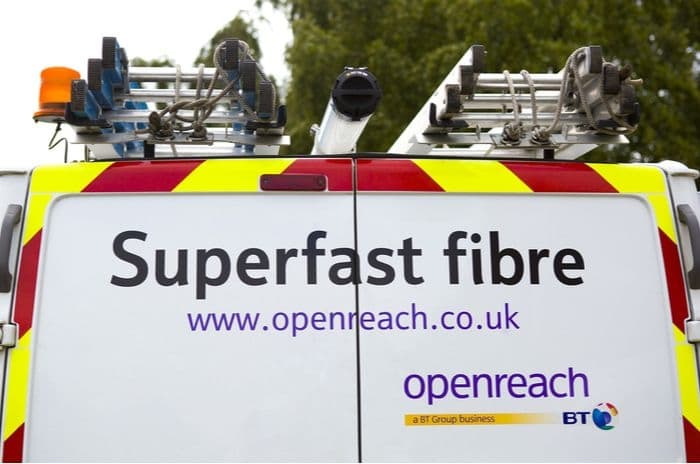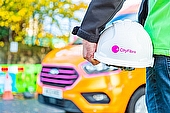Home > Broadband > News > Race to Infinity: the new model for fibre upgrades?
Race to Infinity: the new model for fibre upgrades?
HOW do you decide which communities should get much needed upgrades to their broadband infrastructure first?

If you're BT, at least, with an X Factor-style 'votes for upgrades' contest pitting rural towns against one another: Race to Infinity.
On one level, the contest, cooked up with the PR giant Porter Novelli, was a truly active approach to getting communities excited about faster broadband.
But, in practice, and especially when some irregularities in the way votes were counted were uncovered, the contest started to look like a mirror of BT's scatter gun approach to upgrading rural exchanges.
Voting for fibre
The essence of the Race for Infinity campaign was that BT committed themselves to providing fibre by early 2012 to five communities that showed the greatest demand.
As the name suggests, the promotion primarily focused on BT Infinity (reviewed here) but BT also doled out voting opportunities to two companies reselling deals using BT's fibre network: Eclipse and Entanet.
Gavin Patterson, CEO of BT Retail, commented, "The Race to Infinity is an opportunity for the country to make its voice heard.
BT will have rolled out fibre to more than four million homes by the end of 2010 but it'll still have more than 12 million premises to pass by 2015. We want to hear from towns and villages across the UK and so I would encourage people to take part and register their interest.".
Measuring demand
Through a dedicated site, BT asked for a postcode, phone number, name, address and email to verify a vote for fibre.
Demand was measured by the percentage of premises that expressed an interest (with a minimum of 1,000 votes required).
BT promised to "engage with" any community in which 75% or more of premises expressed an interest in fibre even if they didn't win the competition.
The winners
The lucky exchanges were:
- Baschurch, Shropshire
- Blewbury, Oxfordshire
- Whitchurch, Hampshire
- Caxton, Cambridgeshire
- Madingley, Cambridgeshire
- Innerleithen, Scottish Borders
- Exeter Castle, Devon (from Eclipse votes)
Voting problems
Conspicuous by its absence from BT's final six was early leader Malvern, Worcestershire.
According to the Malvern Gazette just 11% of properties in the town had registered their interest in superfast broadband by close to the end of the voting period.
The drop off - which came despite considerable local support - could be simply a result of the fact that Malvern is far bigger than most of the communities that went on to win.
There are around 15,000 lines in the town while most of the winners have way under 3,000.
In other words, the process was inevitably biased towards the very smallest towns and villages, some would argue fairly since they'd likely have to wait longest for fibre in the first place.
A bigger possible problem was that the online voting system was pretty easy to fool: users had to enter an email but it wasn't validated and a phone number but it wasn't double checked for accuracy either.
By entering fake post codes and phone numbers and clearing cookies between votes PC Pro voted for Caxton three times from the same computer.
Finally, the contest, by its very nature, failed to help a significant proportion of the fibre-less masses: those served by an enabled exchange who are nevertheless unable to access fibre because it hasn't been enabled for their property.
BT have always been shaky on the proportion of premises within an enabled area that can actually get fibre but in some areas the proportion is thought to be as low as 40%.
Setting a precedent?
In the final analysis, however, what counts for communities is less the ins and outs of one promotion but BT's schedule for fibre in general.
As we noted right at the start, BT have previously indicated that they're not averse to taking local views into account by asking households and businesses to register their interest.
Interest + cash
But it does help when local demand for faster broadband is accompanied by a sizeable chunk of local Government cash.
Encouraged by the Coalition, more and more communities in 'the final third', areas where it is 'economically unviable' for BT to provide FTTC access, are taking on the responsibility themselves.
For example, in June 2010 Iwade in Kent persuaded BT to upgrade their village's exchange and its 1,400 households by hustling a £13,000 county council grant to which BT added a further £62,000.
"Broadband has always been about huge amounts of public money but in the process of that we risk forgetting the small communities," Steve Robertson, chief executive of BT Openreach, said of the upgrade.
"[Without extra money] we risk missing the chance to fill in places on the map that aren't viable for us to do on their own," he added.
Going it alone
In November 2010, residents of Ashby de la Launde, Lincolnshire showed off their shiny, fibre connections which give them download and upload speeds of around 70Mb, not bad considering the village's previous best broadband bet had delivered just under 1Mb via a mobile broadband dongle.
And really not bad when you consider that they did it in cooperation with a private company called Fibrestream and without a penny of taxpayer cash.
See our article here for more on rural community rollout projects and the companies involved.
Get insider tips and the latest offers in our newsletter

We are independent of all of the products and services we compare.

We order our comparison tables by price or feature and never by referral revenue.

We donate at least 5% of our profits to charity, and we aim to be climate positive.
Latest News

11 December 2025
Virgin Media offer Meta Ray-Bans with TV bundles
11 December 2025
Government rules out ban on mid-contract price hikes
24 November 2025
CityFibre delivers full-fibre freedom to Hull with 30+ ISPsGet insider tips and the latest offers in our newsletter


